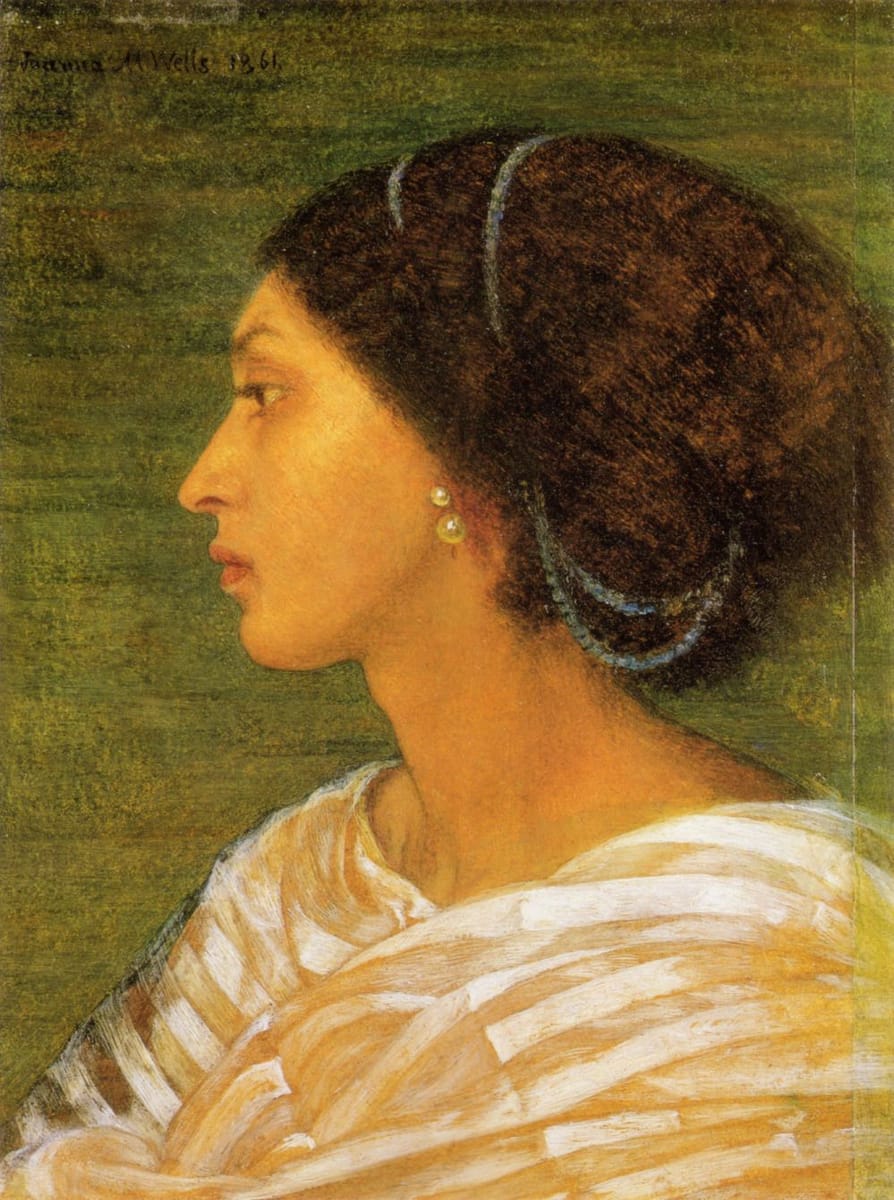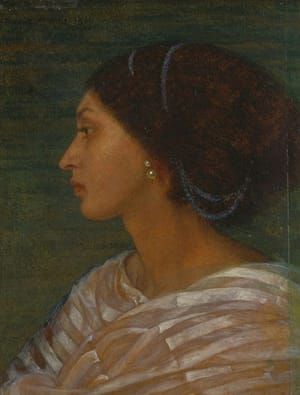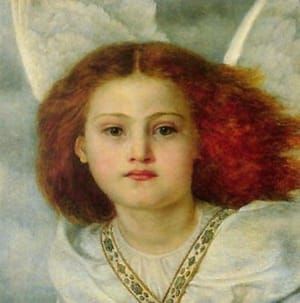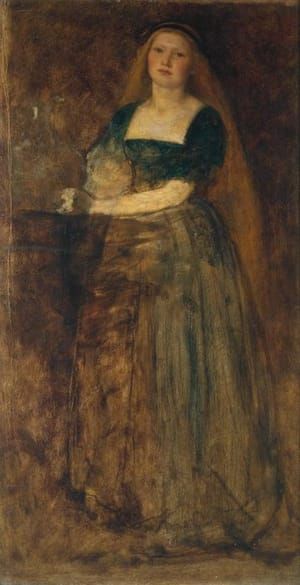

Head of a Mulatto Woman
Joanna Mary Boyce
...Joanna Boyce’s regal profile of Fanny, sedate and grand without any heavy handed exoticism...
...Fanny Eaton... the black Victorian lady who appears in many well known and highly regarded Pre-Raphaelite works of art....
During her short career as model, ( between 1859-67) Fanny Eaton sat for several prominent Pre-Raphaelite artists and their circle, including: Rossetti, Millais, Frederick Sandys, Rebecca and Simeon Solomon, Joanna Boyce and Albert Moore. Her public debut was in Simeon Solomon’s “The Mother of Moses” which was exhibited at the Royal Academy in 1860.
Fanny Eaton’s face can be seen in a number of oil paintings and preparatory drawings, yet her importance as a Pre-Raphaelite model has often been overlooked or forgotten.
It is evident and obvious that she made an impact on the artists by the body of work that she features in.
In August 1865 Rossetti wrote to Ford Madox-Brown and described Fanny Eaton as having ‘‘a very fine head and figure and a good deal of Janey about her”. This was a significant achievement considering the era most infamous for its rigid beauty standards and intense racial prejudices. Interesting too, that Rossetti equated Fanny’s beauty with Jane Morris’, his muse and lover.
Fanny Eaton was born Fanny Antwistle in June 1835, in St Andrews, Jamaica.
Her mother was Matilda Foster, a woman of African descent, who may have been born into slavery. No father was named on Fanny’s birth records, suggesting that she could have been illegitimate ( it is suspected, a white slave owner fathered her)....
Aged 22 in 1857 Fanny married James Eaton, 25 a horse cab owner and driver from Shoreditch. They eventually had ten children together, six girls and four boys.
Fanny Eaton’s career as a model was short but intense, lasting for around ten years. She started modelling in her twenties working as a regular portrait model at the Royal Academy, which is potentially where she caught the attention of several of the renowned painters she sat for.
She modeled out of necessity to supplement her earnings, when her employment as a charwoman was not enough to sustain her family of then, 7 children.
Born into the British colonies and daughter of a former slave, Fanny Eaton’s visual presence in artwork represented a social group outside the traditional Victorian social boundaries. Eaton’s presence in Pre-Raphaelite art focused attention onto the “Other” in Victorian society, challenging societal expectations of black women. Victorian art typically portrayed people of colour as decorative figures and they were rarely seen as models of idealized beauty.
(Continued at https://marinamade.me/2016/12/11/fanny-eaton-pre-raphaelite-muse/)
Uploaded on Apr 25, 2015 by Suzan Hamer
Joanna Mary Boyce
artistArthur
Wait what?




